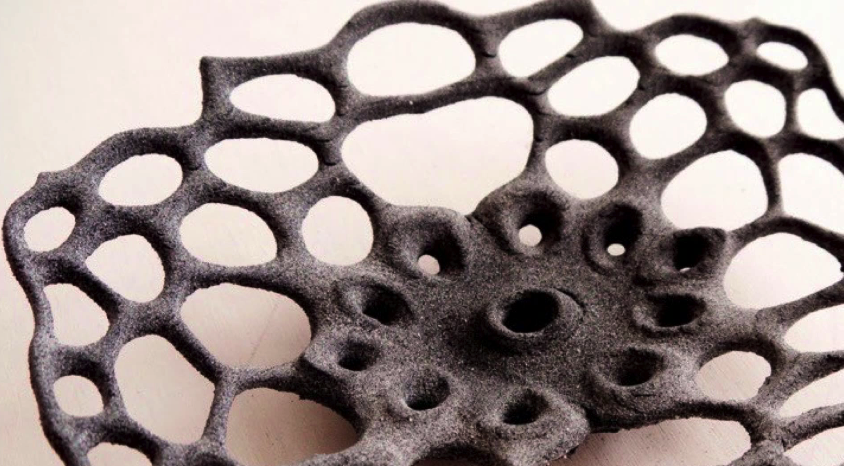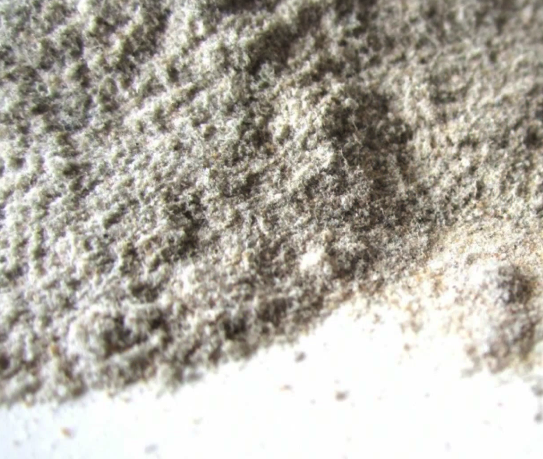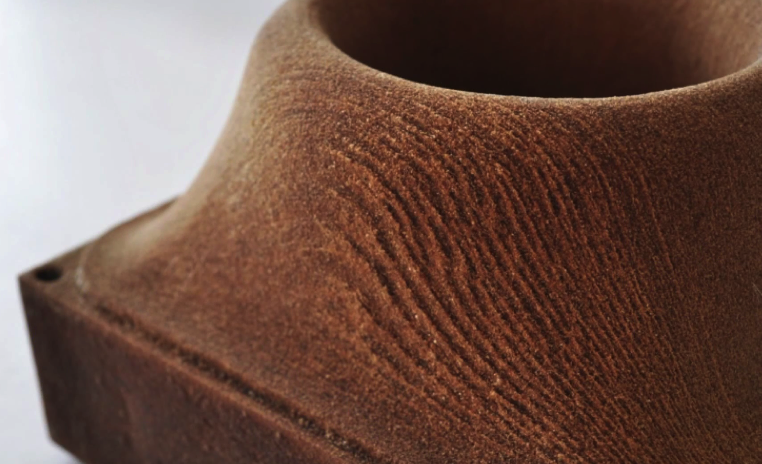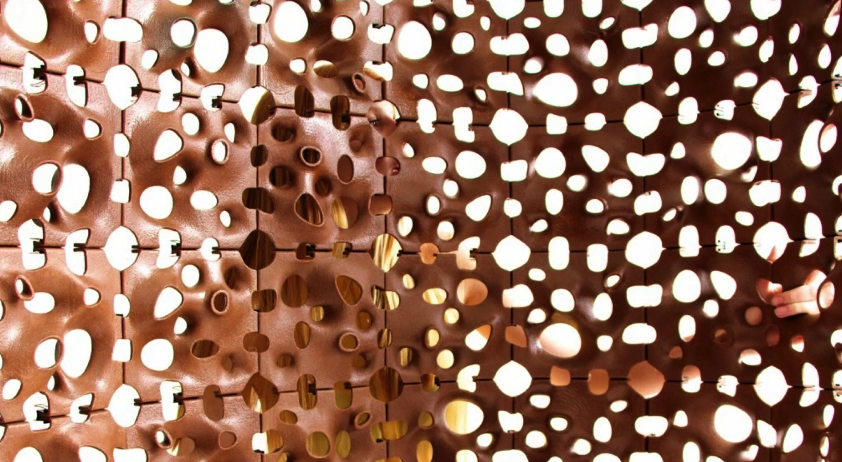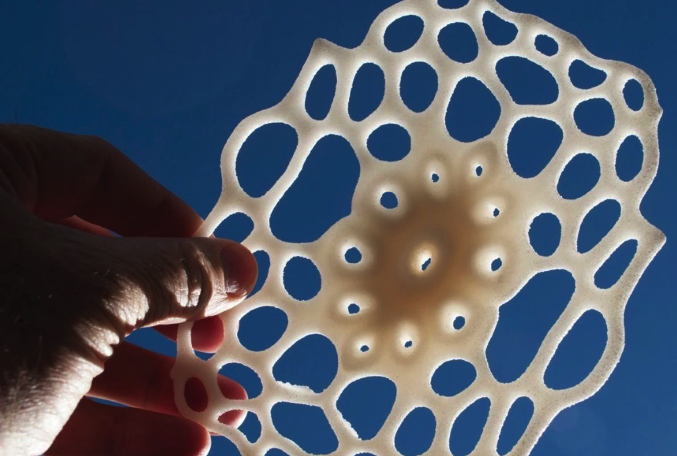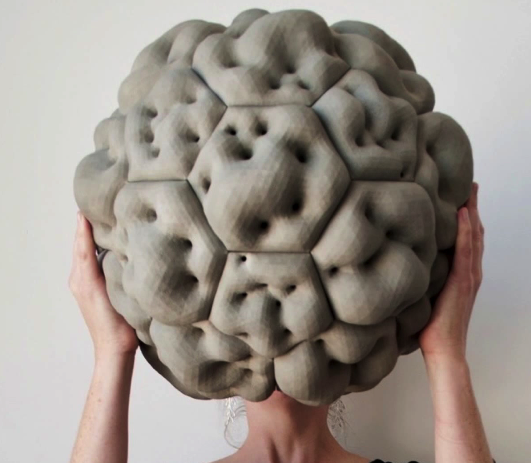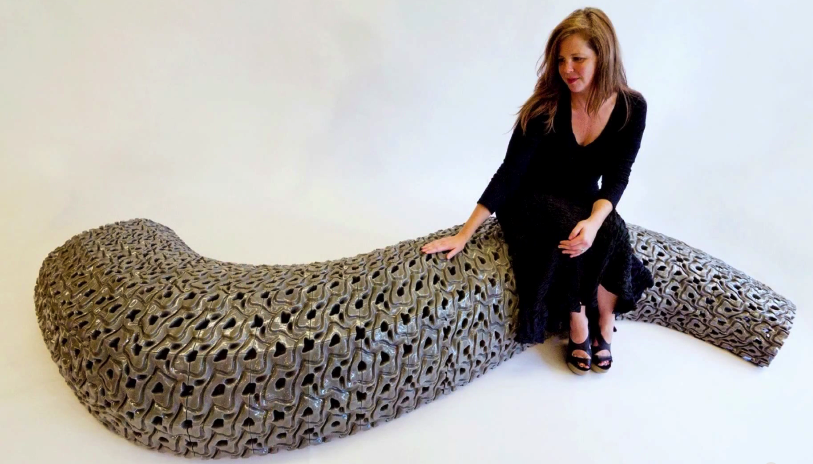Future Buildings to be 3D Printed Out of Rubber Tires, Salt, Paper & More – Ronald Rael’s REAL 2015 Presentation
Emerging Objects is a company that we have covered many times in the past couple of years. They have been on the cutting edge of 3D printing, bringing to fruition uses which we have never seen before from the technology. Whether it is 3D printing with new materials such as tea, salt, or coffee, or if it is creating large structures which depict where the future of architecture may be going, the company, co-founded by Ronald Rael and Virginia San Fratello, continues to surprise us with their latest innovative techniques.
At the recent REAL 2015 conference, Ronald Rael was on hand to give a very interesting talk, touching on the question, “What if 3D printable materials were durable, affordable, inexpensive and ecological?” As Rael and San Fratello are both architects, they also are constantly looking at the idea of 3D printing architecture, as we have seen with several of their interesting projects in the past.
“The first material that I want to tell you about is rubber,” said Rael. “There are about 300 million tires that are thrown away every year. Fortunately about 80% of those tires are recycled, but we want to find a use for the other 20% that aren’t, and maybe that’s a 3D printable material.”
Emerging Objects has taken these tires and put them through a cryogenic process where they are frozen and then turned into a powder which was then used to 3D print objects. The hope is that perhaps this 3D printed rubber could be used as a future building material. Rubber is a very forgiving material, so the potential seems to be there for future architecture.
“Paper is another material that we are looking at,” Rael explained. “In working with students, we developed a way where we can make a 3D printable paper material, not only from just any paper, but from recycled news-print.”
The paper, which is pulverized, is then turned into a material that is compatible with 3D printing. The hope here is to use this 3D printed paper as insulation, sound attenuation, packaging, etc. Just imagine if we no longer had to waste paper, and instead it could be reused within many industries.
Like paper, Rael is also investigating the idea of printing with wood. As he explained, within the construction industry there are about 70 million tons of wood waste every year in the United States alone. He estimates that about 60% of this waste is potentially recoverable and could be used for 3D printing. In fact, Emerging Objects has proven this with some examples which Rael showed off. They are currently thinking about how different 3D printed wood components can be assembled together.
“What’s interesting about that as well, is that the material process in 3D printing which is layers of manufacturing surfaces, added together to create an object,” says Rael. “[It] laminates in such a way [during the printing process] that we get a kind of unnatural wood grain.”
While a lot is made about figuring out ways to reuse non-renewable resources, Emerging Objects also likes to conceive of ways to utilize some of the world’s most abundant renewable resources, such as salt. With salt being available worldwide at affordable prices, it makes for quite the interesting material to use for 3D printing. Like with wood, Rael and San Fratello are investigating how salt can be used as a 3D printable building material. Exhibiting properties of strength and translucency, and often able to be locally sourced, salt is quite an interesting product. Ultimately they are looking into ways to 3D print salt building blocks, which are basically salt printed Lego blocks that can be assembled together to create large structures.
While there have been a lot of companies investigating the creation of giant 3D printers capable of fabricating larger buildings, Emerging Objects doesn’t look at it this way. Instead, they prefer to study the possibilities of creating various printable materials which can be combined together to create architecture. Perhaps a building with 3D printed salt walls, 3D printed wood interiors and 3D printed paper insulation. They prefer to ponder the idea of taking 3D printed bricks that can be assembled together for lightweight, durable structures.
“We are actively thinking about what it means to make a 3D printed house,” says Rael. “Not in a way that the 3D printer makes the entire house, but the materials and the assembly systems and the components integrate with traditional construction systems — concrete, wood framing, other types of systems — and 3D printing takes its role into those traditions and becomes a new tradition for making buildings.”
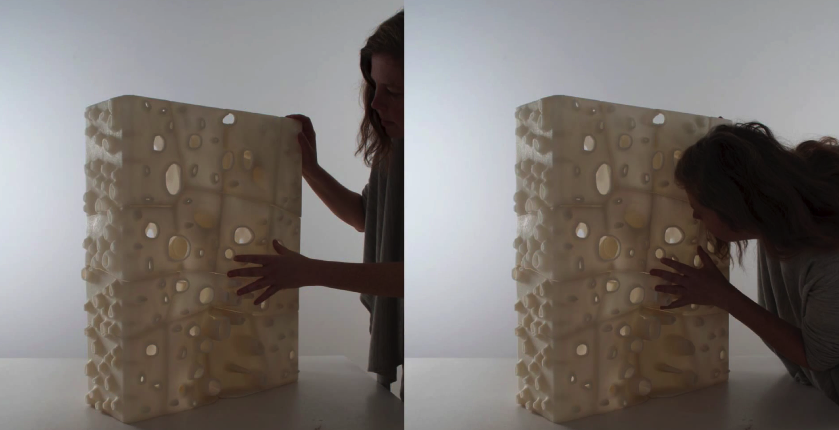
3D printed salt assambled structures
Emerging Objects doesn’t stop here though. They are constantly looking into 3D printing with even more materials, such as sands and clays. Rael also touched on the 3D printed clay cool bricks, and the sand printed earthquake column which we have covered in the past.
When we think about current construction methods, cement is one of the most used materials. Emerging Objects, however, is taking a different approach with cement, by 3D printing with a unique form of this material.
“Our cement material does something that other cement materials don’t,” Rael explained. “We are not interested in printing wet cement because we believe you can only stack wet cement so high. We are using a low-water cement polymer that has some interesting properties. It has a very high strength, it exceeds 3,000 pounds per square inch, which is about the strength of traditional concrete, and we can make it without ‘form work’. Form work constitutes about 60% of the cost of concrete construction. In this case, we eliminate the form work from the process, we can make complex forms, and also there is no waste from the form work, and there is very little water.”
This allows them to make much more complex designs and structures than traditional cement construction means do. Rael provided examples of some things that can be created, including an elaborate cement 3D printed furniture piece called the “Seat Slug.”
Every time Emerging Objects releases another project that they have been working on, I’m always left in awe. Without a doubt, in my mind, 3D printing will gradually make its way into architecture, and Emerging Objects will be leading the way.
What do you think about some of these creative uses for 3D printing to reuse waste, utilize abundance and create structures which provide properties and aesthetics unlike anything possible with traditional techniques? Discuss in the Emerging Objects forum thread on 3DPB.com. Check out Rael’s talk below.
Subscribe to Our Email Newsletter
Stay up-to-date on all the latest news from the 3D printing industry and receive information and offers from third party vendors.
You May Also Like
3D Printing Financials: Fathom Struggles in Financial Quicksand During Critical Transition
Facing a year of key transitions and financial pressures, Fathom (Nasdaq: FTHM) has filed its annual report for 2023 with the U.S. Securities and Exchange Commission (SEC). The document outlines...
Latest Earnings Overview for Australian 3D Printing Firms Titomic and AML3D
Australian 3D printing manufacturing firms Titomic (ASX: TTT) and AML3D (ASX: AL3) reported their financial results for the period from July to December 2023, marking the first half of their...
3D Printing Webinar and Event Roundup: April 7, 2024
Webinars and events in the 3D printing industry are picking back up this week! Sea-Air-Space is coming to Maryland, and SAE International is sponsoring a 3D Systems webinar about 3D...
3D Printing Financials: Unpacking Farsoon and BLT’s 2023 Performance
In the Chinese 3D printing industry, two companies, Farsoon (SHA: 688433) and Bright Laser Technologies, or BLT (SHA: 688333), have recently unveiled their full-year earnings for 2023. Farsoon reported increases...



